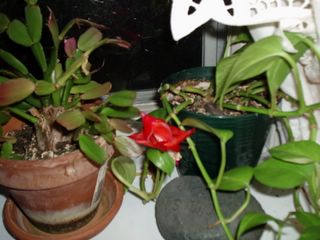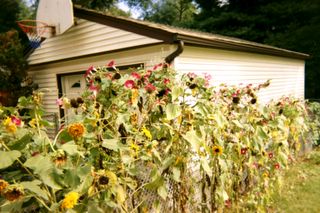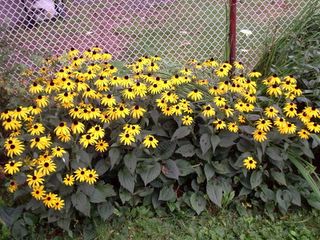Basil
Last year I decided to combine my two hobbies, gardening and cooking, and start an herb garden. It was less than a resounding success. The spot I chose, ground that had been uncovered during a sidewalk renovation, gets sun all afternoon but is sloped and suffers erosion when it rains which it did frequently last year. In other words, most of the seeds I planted washed away. Some basil, however, did manage to take root and grow into healthy plants. I discovered this in the course of weeding the plot with the intention of transplanting some asters there to help hold the soil. The most wonderful aroma started wafting up as I pulled up the weeds. A quick check of my "planting diagram" and a Google image search indicated the plants emitting the wonderful smell were sweet basil. I had to research it because I had never grown basil before. I also have to admit, I have never used fresh basil, only the dried stuff in plastic jars from the grocery store so I had never actually seen basil. Boy, am I embarrassed.
I did some research on drying herbs. The crawl space of my house would be the ideal spot. Dark, dry, warm, no drafts. Just one problem. I was afraid if I put the basil up there, I would forget about it. You know, out of sight, out of mind. That happened when I was saving seed from scarlet runner beans. I put them on paper plates on top of the refrigerator to finish drying and promptly forgot about them. Every time I cleaned the top of my refrigerator (which I have to admit is not often) I would "discover" beans drying there. I had visions of carefully hanging basil from the beams in my crawl space in August and then not seeing it again until I took out the Christmas decorations. I had to find another place.
I love old houses. I love reconstructions of old houses. How many times have we all seen dried herbs hanging from the rafters of the kitchens of old houses that we have toured? I figured, why not? If it was good enough for our ancestors, it's good enough for me. There are unused hooks for curtain rods on one of the windows in my kitchen. I very carefully tied two bunches of basil with rubber bands as suggested by my research so that they would contract as the plants dried and hung one on each hook. My kitchen smelled wonderful. Looked funny, but smelled wonderful. When the plants had dried sufficiently, I took them down and placed them in a container. Just one problem. They no longer smelled as wonderful. What happened? Where did the lovely fragrance go? I thought drying was supposed to concentrate the oils. Oh well, into the seed drawer in the refrigerator they went. And stayed there, forgotten, until the seeds I had ordered for this year's gardens started arriving in the mail. I opened the drawer in the fridge and saw the forgotten basil. Out of sigh, out of mind, remember?
All the cold weather we have been experiencing has been a wonderful inducement to cook up a storm. If I made lasagna, I could use some of my very own basil! When I opened the container, it smelled great. I was thrilled. I crumbled up enough leaves to equal the measurements in the recipe and started simmering the sauce. The basil smelled great dry but the minute it was rehydrated in the sauce, it assumed a whole new character. I can only describe the smell and the taste as stewed grass clippings. I don't know what our ancestors were eating, but there is a definite reason why herbs should be dried in a place that is dark, dry, warm and has no drafts and not in the kitchen. This year I'm using the crawl space even if it means that my Christmas decorations will smell of herbs.















